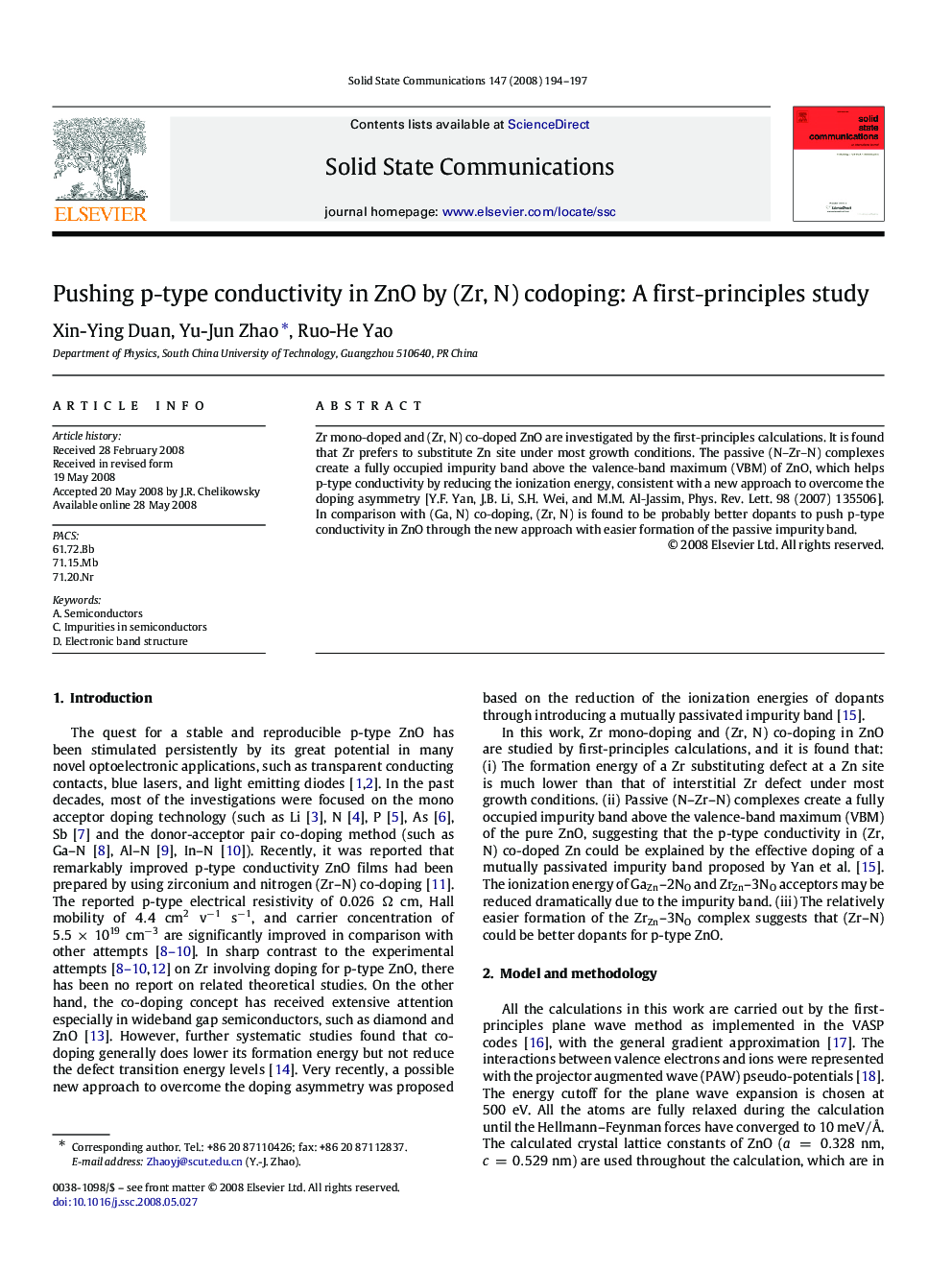| Article ID | Journal | Published Year | Pages | File Type |
|---|---|---|---|---|
| 1595915 | Solid State Communications | 2008 | 4 Pages |
Abstract
Zr mono-doped and (Zr, N) co-doped ZnO are investigated by the first-principles calculations. It is found that Zr prefers to substitute Zn site under most growth conditions. The passive (N–Zr–N) complexes create a fully occupied impurity band above the valence-band maximum (VBM) of ZnO, which helps p-type conductivity by reducing the ionization energy, consistent with a new approach to overcome the doping asymmetry [Y.F. Yan, J.B. Li, S.H. Wei, and M.M. Al-Jassim, Phys. Rev. Lett. 98 (2007) 135506]. In comparison with (Ga, N) co-doping, (Zr, N) is found to be probably better dopants to push p-type conductivity in ZnO through the new approach with easier formation of the passive impurity band.
Related Topics
Physical Sciences and Engineering
Materials Science
Materials Science (General)
Authors
Xin-Ying Duan, Yu-Jun Zhao, Ruo-He Yao,
